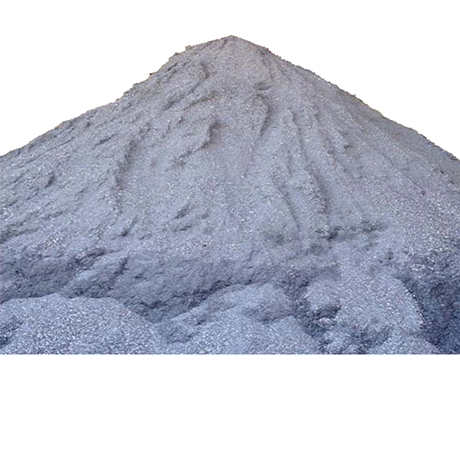Lead Concentrate
Lead concentrate is irreplaceable raw material used for the production of lead. Lead concentrate is produced in the process of flotation enrichment of zinc-lead ores. The Froth flotation process separates the Lead and other minerals from the waste rock (tailings) to form a concentrate. It contains max 9% of H2O. It is dark blue in color , its granulation ranges from 0-0,2mm. After the ore is removed from the mine, it's treated at a concentrating mill. Concentrating means that to remove the waste rock from the lead. To begin, the ore should be crushed into very small pieces. The ore is ground at the mill, leaving it in particles with diameters of 0.1 millimetres or less. This means the individual granules are finer than table salt. The texture is something like granulated sugar. Lead concentrate is advantageous for transportation since it reduces weight and volume. A solution can be reproduced at the time of usage with the addition of a solvent. Concentrate is also useful in any application where high surface areas are desired such as water treatment and in fuel cell and solar applications. Nanoparticles also produce very high surface areas. Our standard Concentrate particle sizes average in the range of - 325 mesh, - 100 mesh, 10-50 microns and submicron (< 1 micron). We can also provide many materials in the nanoscale range.
Lead concentrate is irreplaceable raw material used for the production of lead. Lead concentrate is produced in the process of flotation enrichment of zinc-lead ores. The Froth flotation process separates the Lead and other minerals from the waste rock (tailings) to form a concentrate. It contains max 9% of H2O. It is dark blue in color , its granulation ranges from 0-0,2mm. After the ore is removed from the mine, it's treated at a concentrating mill. Concentrating means that to remove the waste rock from the lead. To begin, the ore should be crushed into very small pieces. The ore is ground at the mill, leaving it in particles with diameters of 0.1 millimetres or less. This means the individual granules are finer than table salt. The texture is something like granulated sugar. Lead concentrate is advantageous for transportation since it reduces weight and volume. A solution can be reproduced at the time of usage with the addition of a solvent. Concentrate is also useful in any application where high surface areas are desired such as water treatment and in fuel cell and solar applications. Nanoparticles also produce very high surface areas. Our standard Concentrate particle sizes average in the range of - 325 mesh, - 100 mesh, 10-50 microns and submicron (< 1 micron). We can also provide many materials in the nanoscale range.
Properties of Lead Concentrate
| Molecular Weight | 207.2 |
|---|---|
| Appearance | Bluish white |
| Boiling point | 1740 °C |
| Melting point | 327.502 °C |
| Density | 11.35 g/cm3 |
| Electrical Resistivity | 20.648 microhm-cm @ 20 °C |
| Electronegativity | 1.8 Paulings |
| Heat of fusion | 1.224 Cal/gm mole |
| Heat of vaporization | 42.4 K-Cal/gm atom at 1740 °C |
| Poisson's ratio | 0.44 |
| Specific heat | 0.038 Cal/g/oK @ 25 °C |
| Tensile strength | N/A |
| Thermal conductivity | 0.353 W/cm/K @ 298.2 K |
| Thermal expansion | (25 °C) 28.9 µm·m-1·K-1 |
| Young's modulus | 16 Gpa |
| Vickers hardness | N/A |
